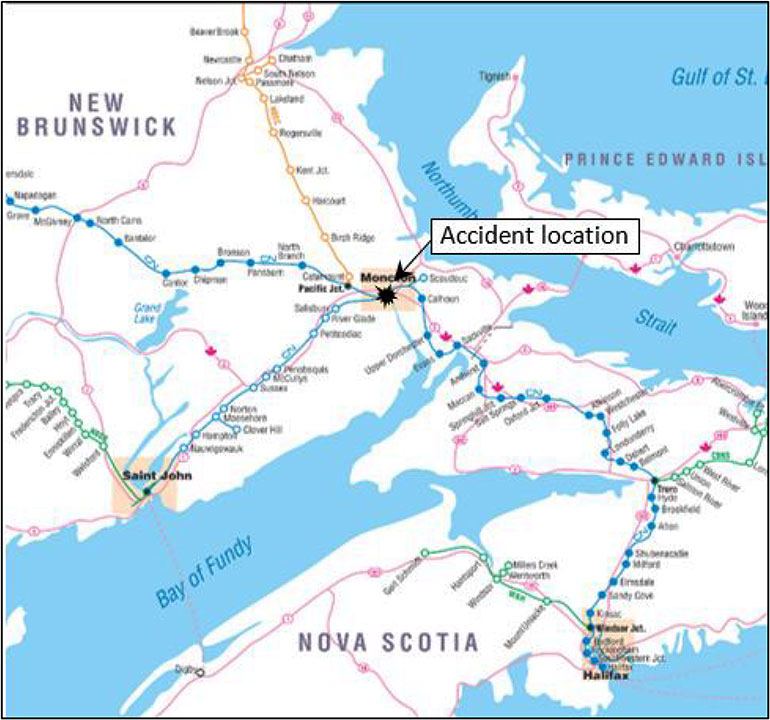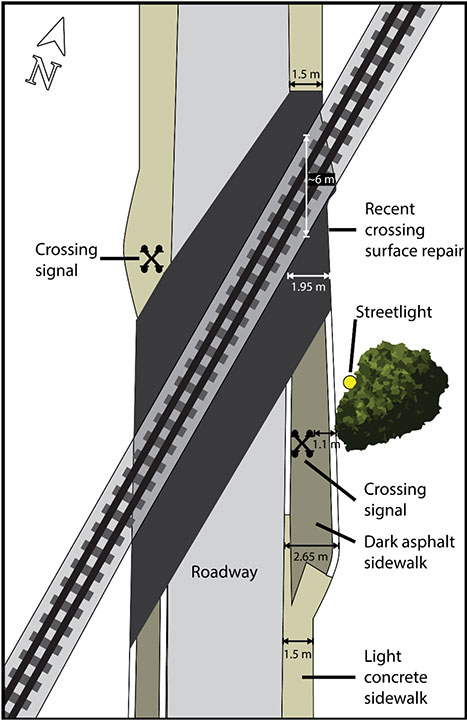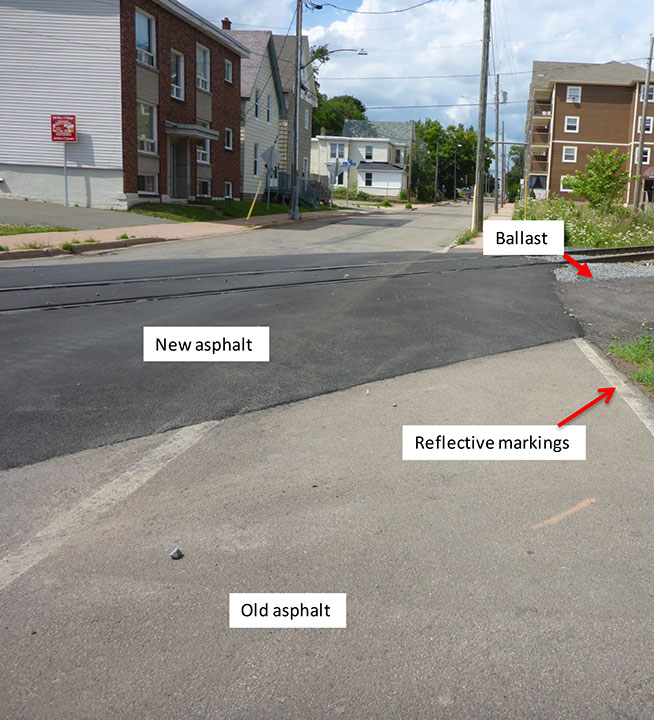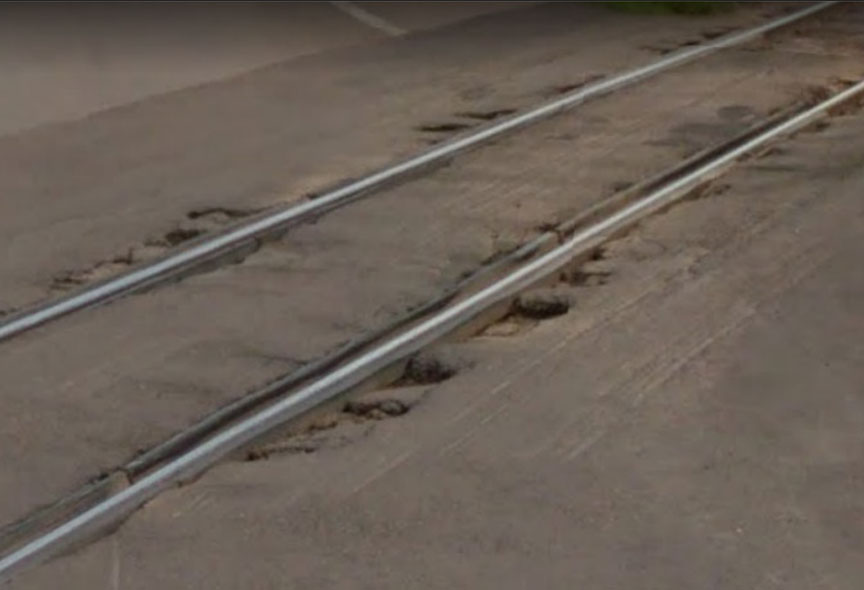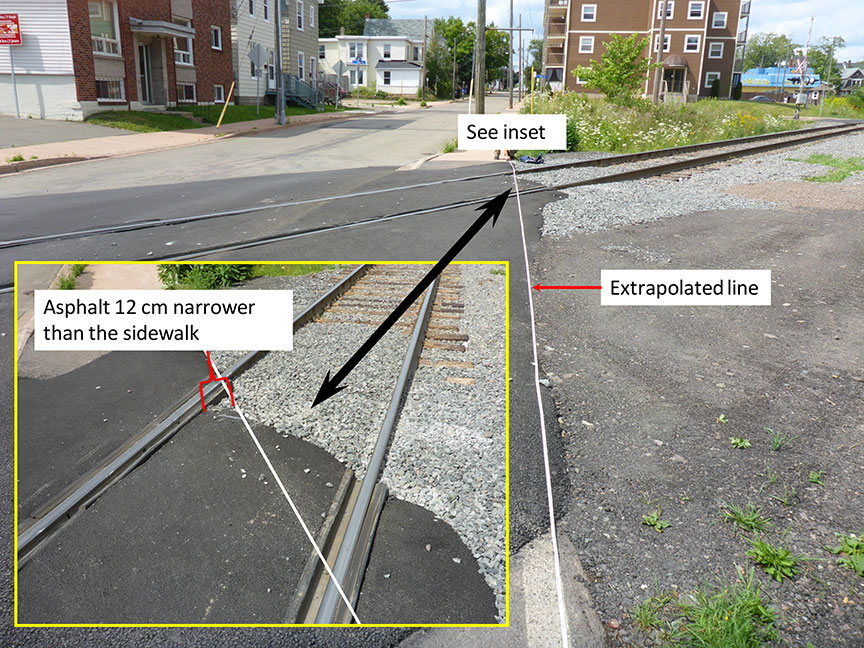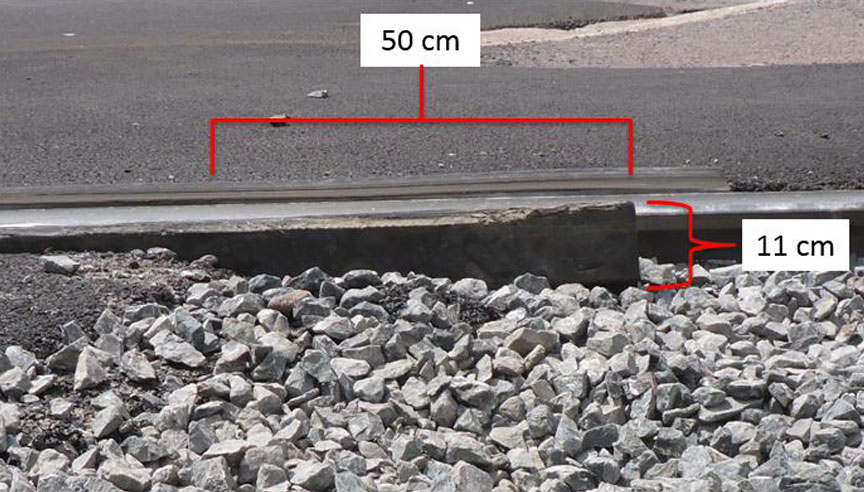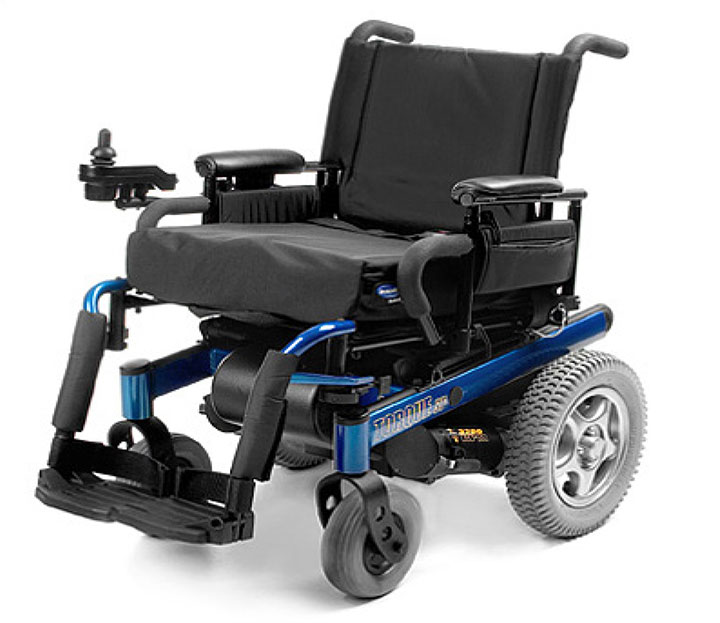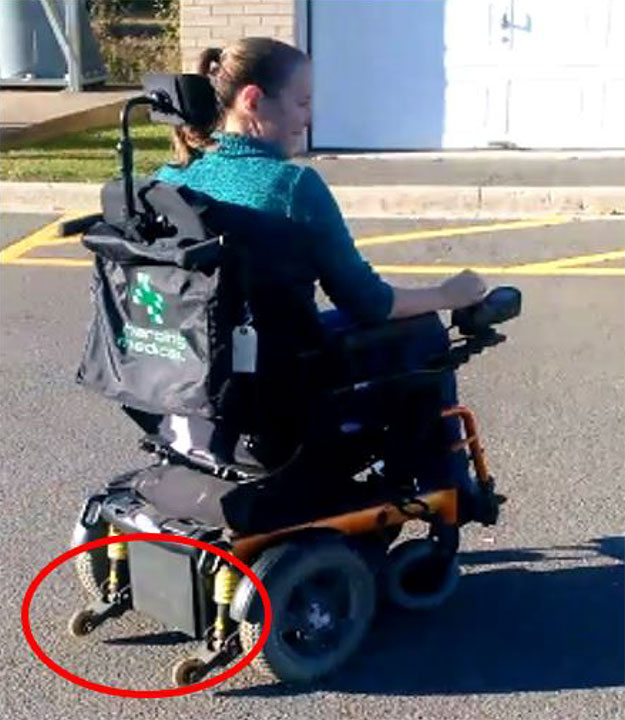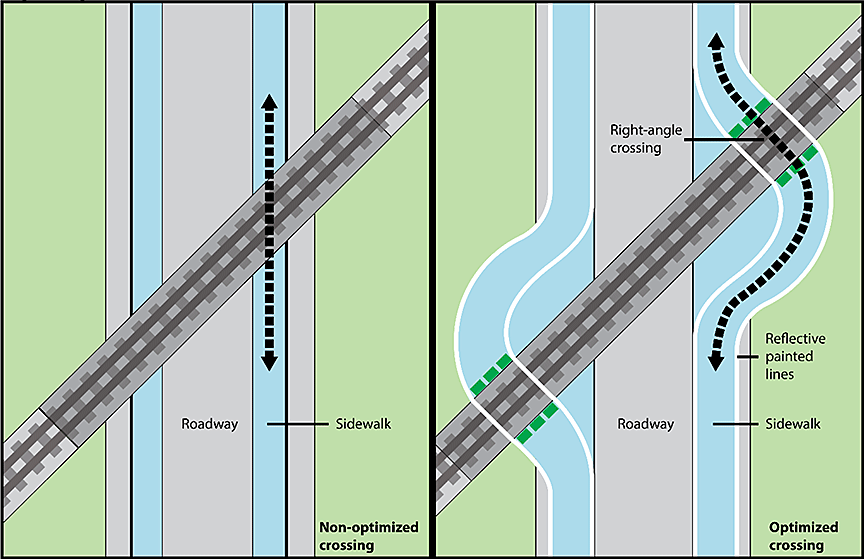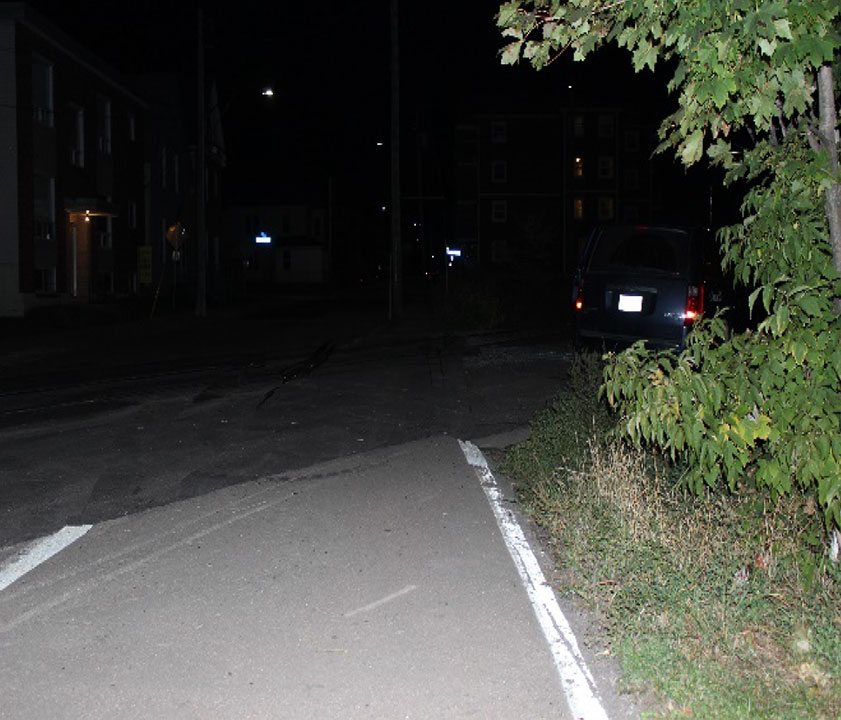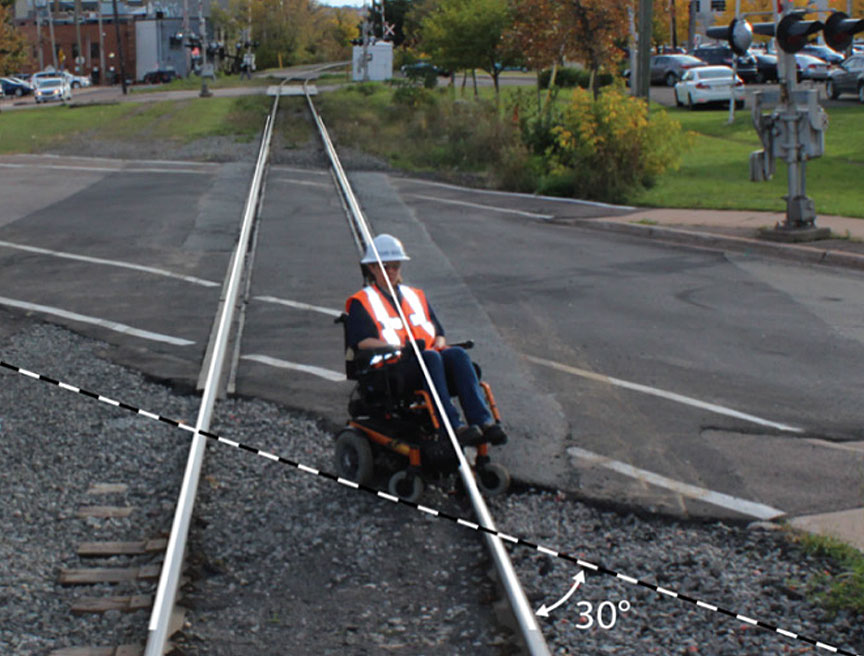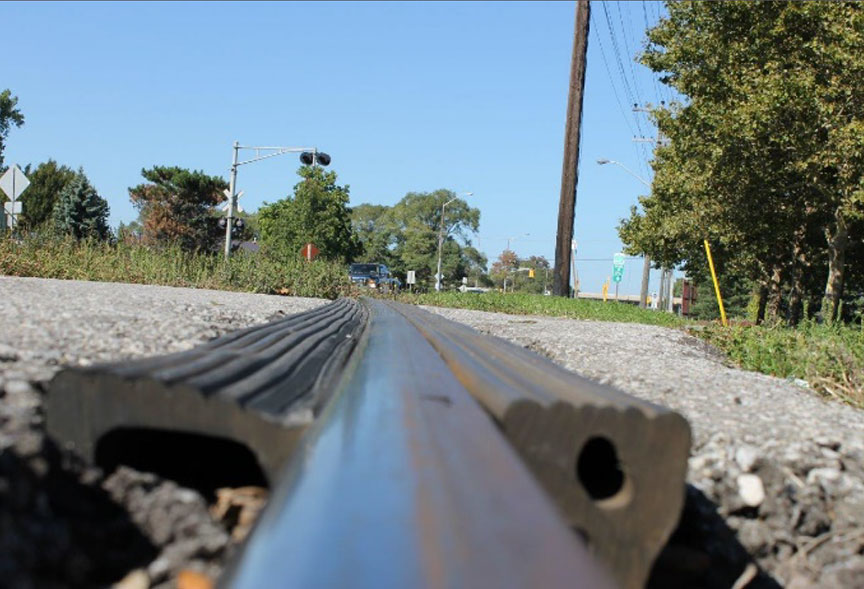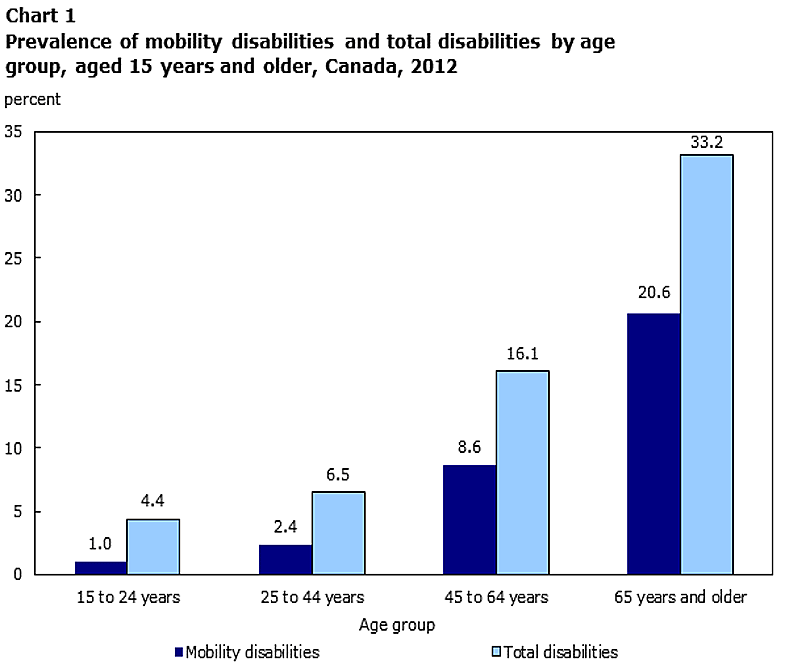Crossing accident
Canadian National Railway Company
Freight train Q-12111-26
Mile 124.43, Springhill Subdivision
Moncton, New Brunswick
The Transportation Safety Board of Canada (TSB) investigated this occurrence for the purpose of advancing transportation safety. It is not the function of the Board to assign fault or determine civil or criminal liability. This report is not created for use in the context of legal, disciplinary or other proceedings. See Ownership and use of content. Masculine pronouns and position titles may be used to signify all genders to comply with the Canadian Transportation Accident Investigation and Safety Board Act (S.C. 1989, c. 3).
Summary
On 27 July 2016, at approximately 0143 Atlantic Daylight Time, while travelling westward on the Springhill Subdivision, Canadian National Railway Company freight train Q-12111-26 struck a pedestrian in a wheelchair at the Robinson Street public crossing (Mile 124.43) in Moncton, New Brunswick. The crossing was equipped with flashing lights, bell, and gates. The pedestrian was fatally injured.
Le présent rapport est également disponible en français.
1.0 Factual information
1.1 The accident
On 26 July 2016, at approximately 2150,Footnote 1 Canadian National Railway Company (CN) freight train Q-12111-26 departed Halifax, Nova Scotia, travelling westward en route to Moncton, New Brunswick (Figure 1).
At about 0140 on 27 July 2016, the train was travelling on the Springhill Subdivision at 30 mph and approaching the Moncton downtown area (Figure 2). The train's headlights were on full power, the ditch lights were on, and the bell had been activated due to the presence of multiple crossings at grade. As the train crested a small hill, a blue light in the distance became visible. As the train approached the blue light, the silhouette of a person in a wheelchair could be seen on the track at the Robinson Street crossing (Mile 124.43). The locomotive horn was immediately activated, and the locomotive engineer applied the brakes. The train was unable to stop before striking the wheelchair, fatally injuring its occupant.
At the time of the collision, the temperature was approximately 19 °C, and the sky was mostly overcast.
1.2 The train
The train consisted of 3 locomotives, 169 loaded freight cars, and 18 empty freight cars. The train weighed approximately 12 200 tons and was about 12 000 feet long. The train crew consisted of a conductor and a locomotive engineer. Both crew members were familiar with the territory, were qualified for their respective positions, and met fitness and rest requirements.
1.3 Recorded information
Recorded information from the video data recorder of the forward-facing camera and from the locomotive event recorder on the lead locomotive was examined. This information was used to determine the sequence of events shown in Table 1.
| Mile | Time | Speed (mph) | Brake pipe pressure (psi) |
Brake cylinder pressure (psi) |
Horn | Bell | Throttle/ dynamic brake position | Event description |
|---|---|---|---|---|---|---|---|---|
| 124.20 | 0142:47 | 30 | 88 | 0 | Off | On | T3 | First indication of a blue light in the distance |
| 124.29 | 0142:58 | 31 | 88 | 0 | Off | On | T2 | Throttle reduced |
| 124.31 | 0143:00 | 30 | 88 | 0 | Off | On | T1 | Throttle reduced |
| 124.33 | 0143:02 | 30 | 88 | 0 | Off | On | Idle | Throttle reduced |
| 124.34 | 0143:03 | 30 | 88 | 0 | Off | On | Idle | Silhouette of chair detected |
| 124.35 | 0143:05 | 30 | 88 | 0 | On | On | Idle | Horn sounded |
| 124.36 | 0143:06 | 30 | 88 | 1 | On | On | Idle | Locomotive brakes applied |
| 124.43 | 0143:14 | 30 | 88 | 71 | On | On | Idle | Collision |
| 124.84 | 0144:25 | 0 | 0 | 0 | Off | On | B5 | All movement stopped |
Video from the forward-facing camera showed that the wheelchair was positioned in the ballast on the east side of the Robinson Street crossing. The right rear wheel of the wheelchair was in the ballast, as were the front caster wheels, which were straddling the north rail.
1.4 Robinson Street crossing
In the downtown area of the City of Moncton, there are 6 public crossingsFootnote 2 (between Mile 124.26 and Mile 124.49). A no-whistle zone is in effect for these crossings. Each crossing is equipped with a grade crossing warning system (GCWS) consisting of flashing lights, bell, and gates.
1.4.1 Crossing information
Robinson Street is a 2-lane asphalted roadway approximately 24 feet wide curb to curb and is bordered with a sidewalk on each side. The street has a north–south orientation and crosses the railway track at an angle of 34 degrees (Figure 3). On average, about 2000 vehicles use this crossing each day.Footnote 3 There are 2 streetlights in the vicinity of the crossing: one located in the southeast quadrant of the crossing and the other in the northwest quadrant, approximately 110 feet past the crossing.
1.4.2 The sidewalks
The sidewalks on Robinson Street were made of concrete, except for the portions in the vicinity of the crossing, which were made of asphalt. The width of the concrete sidewalks was 1.5 m, while the width of the asphalt portion varied. The asphalt portion of the east sidewalk south of the crossing was 2.65 m wide to accommodate a post supporting the GCWS, leaving a usable sidewalk width of approximately 1.1 m (Figure 4).
The asphalt portion of the sidewalk immediately south of the crossing was 1.95 m wide. The asphalt sidewalks approaching the crossing had white reflective markings in the form of lines along the inner and outer edges of the sidewalk (Figure 5). These markings were approximately 10 cm wide.
1.4.3 Maintenance history at the Robinson Street crossing
According to records from the Canadian Transportation Agency, CN is responsible for maintenance of the existing crossing and signals. CN standard practice circulars state that CN is also responsible for the physical maintenance of the surface of the travelled roadway between the rails and for a distance of 18 inches outside of each rail.
Maintenance records indicate that the Robinson Street crossing was subject to recurrent surface degradation (Figure 6). Consequently, re-asphalting was performed to repair the crossing surface.
Prior to the accident, the most recent crossing surface repair had been completed on 23 June 2016. To perform this work, CN had obtained a work permit from the city to close the road and complete the repair. The paving work was contracted to a local construction company that performed road paving services for CN on a regular basis. The scope of the work, which included paving to the end of each rubberized flangeway, was discussed with the contractor at a pre-site meeting. While the work was being carried out, a CN employee remained on site to provide track protection. However, the exact condition of the crossing following the completion of the repair work on 23 June 2016 was not documented.
From the date the work was completed to the date of the accident, CN performed 10 visual inspections by hi-rail and 5 walking inspections of the Robinson Street crossing. No exceptions were noted. During these inspections, much of the CN inspectors' attention would be focused on track conditions in the vicinity of the crossing and on the GCWS. Research shows that repeated exposure to a perceived risk without any resulting adverse consequences can result in a gradual shift from a heightened state of alertness and readiness (to respond to a risk) to a relaxed or normal state.Footnote 4
Prior to the accident, the most recent Transport Canada (TC) inspection at this crossing had been performed on 22 November 2013. No issues had been noted.
1.5 Site examination
The new asphalt was darker in appearance than the old asphalt, and it was darker than the concrete sidewalk on the approach to the crossing. There were no painted reflective lines on the newly asphalted portion of the sidewalk at the crossing. The easternmost reflective line ended approximately 3 to 4 m before the south rail (Figure 5).The new asphalt was irregular and did not follow the edge of the sidewalk (normally delineated by a reflective white line).
At the south rail, the asphalt covered the rubberized flangeway, which extended 48 cm beyond the edge of the sidewalk (Figure 7).
At the north rail, the asphalt stopped about 50 cm short of the end of the rubberized flangeway, creating a void in the sidewalk surface. At its eastern extremity, the rubberized flangeway had a height of about 11 cm above the ballast (Figure 8).
Along the north rail, the rubberized flangeway was higher than the rail. The difference in height varied from 1.4 to 2.5 cm (0.55 to 1 inch), with the greatest difference in height being at the eastern extremity of the crossing.
On the north rail, the flangeway width ranged between 5.5 and 7.5 cm (between 2.25 and 3 inches). On the north rubberized flangeway at the north rail, there were visible marks about 30 cm (12 inches) from its eastern extremity. At this location, the flangeway gap increased to approximately 7.5 cm.
Two gouge marks were present on the asphalt between the rails at the eastern extremity of the crossing (Figure 9). The distance between these marks was about 35 cm (13.8 inches). In front of these marks, the ballast was disturbed. The deformations in the ballast were slightly wider apart (approximately 50 cm) than the gouge marks on the asphalt.
1.6 Subdivision information
The Springhill Subdivision consists of a single main track that extends from Truro, Nova Scotia (Mile 0.0), to Catamount, New Brunswick (Mile 138.4). Train movements are governed by the centralized traffic control system, as authorized by the Canadian Rail Operating Rules, and supervised by a rail traffic controller located in Montréal, Quebec. The track is Class 3 track according to the TC-approved Rules Respecting Track Safety, also known as the Track Safety Rules. Between Mile 124.2 and Mile 124.9, there is a permanent speed restriction of 30 mph for freight trains until the crossings are occupied. Rail traffic on this subdivision consists of 1 passenger train per day and about 10 freight trains per day.
1.7 Track information
At the time of the accident, the track consisted of 115-pound rail, laid on 14-inch double-shouldered tie plates secured with 4 spikes. The rail was box-anchored every tie. The ballast consisted of crushed rock, and the cribs were full. The track was generally in good condition.
The track was visually inspected twice a week (normally by hi-rail). In addition, there was an annual walking inspection, which included a detailed inspection of the crossing.
1.8 The Grade Crossings Regulations and the Grade Crossings Standards
At the time of the accident, the new TC Grade Crossings Regulations (GCR), which came into force on 28 November 2014, were in effect. The GCR contained requirements for existing crossings (Part B of the Grade Crossings StandardsFootnote 6 [GCS]) that applied to the Robinson Street crossing. The Robinson Street crossing met the regulatory requirements, including Part B of the GCS.
The GCR also contained enhanced requirements for new crossings (Part C of the GCS). The GCR indicated that all existing crossings must also comply with Part C of the GCS within 7 years after the GCR coming into force (i.e., by 28 November 2021).
The GCR required the road authority and the railway company to share certain information regarding each existing public grade crossing no later than 2 years after the GCR came into force.
Subsection 4(1) of the GCR states the following:
A railway company must provide a road authority, in writing, with the following information in respect of a public grade crossing:
- the precise location of the grade crossing;
- the number of tracks that cross the grade crossing;
- the average annual daily railway movements;
- the railway design speed;
- the warning system in place at the grade crossing;
- an indication of whether a Stop sign is installed on the same post as the Railway Crossing sign; and
- an indication of whether or not whistling is required when railway equipment is approaching the grade crossing.Footnote 7
Subsection 12(1) of the GCR states the following:
A road authority must provide a railway company, in writing, with the following information in respect of a public grade crossing:
- the precise location of the grade crossing;
- the number of traffic lanes that cross the crossing surface;
- the average annual daily traffic;
- the road crossing design speed;
- the specifications set out in columns A, B and C of Table 10-2 of the Grade Crossings Standards to which the road approach corresponds, taking into account the characteristics set out for rural roads in Table 10-3 of those Standards or the characteristics set out for urban roads in Table 10-4 of those Standards, as applicable;
- the width of each traffic lane and shoulder on the road approach;
- the design vehicle;
- the stopping sight distance;
- the average gradient of the road approach;
- the crossing angle referred to in article 6.5 of the Grade Crossings Standards;
- the applicable departure time referred to in article 10.3 of the Grade Crossings Standards;
- the activation time referred to in article 18.2 of the Grade Crossings Standards;
- the time referred to in article 19.3(a) of the Grade Crossings Standards; and
- an indication of whether the grade crossing includes a sidewalk, path or trail, and if so, whether the sidewalk, path or trail has been designated for persons using assistive devices.Footnote 8
As defined by Statistics Canada, assistive aids and devices
Footnote 9The accident happened before November 2016, which was the end of the 2-year period for sharing the required information about existing public grade crossings. At the time of the accident, the City of Moncton (the road authority) and the railway had not yet shared the required information relating to the Robinson Street crossing.
1.8.1 Flangeway gap
The flangeway gap is the space that runs parallel to the inside of each rail at the crossing. The flangeway gap provides space for the flange of the wheel and is required for the train to safely cross the intersecting roadway.
Both Part B and Part C of the GCS allow for a flangeway gap of up to 4.75 inches (120 mm). However, for crossings that have a sidewalk designated by a road authority for persons using assistive devices, the maximum flangeway gap is reduced to 2.95 inches (75 mm). At the time of the accident, no crossing in Moncton, including the Robinson Street crossing, had yet been designated for persons using assistive devices.
1.8.2 Height difference between crossing surface and top of rail
Part B of the GCS contains no requirements relating to the maximum allowable height difference between the crossing surface and the top of the rail.
Part C of the GCS requires the crossing surfaces to be installed as close as possible to the top of the rail within the rail wear limits. Part C specifies that for most public crossings, the maximum distance of the crossing surface must be within 25 mm above or below the top of the rail. For a designated crossing, the rail can protrude up to 13 mm above or be 7 mm below the crossing surface.
CN's Engineering Track Standards (ETS) (June 2011) allows for up to 1 inch (25 mm) of difference (either above or below) between the crossing surface and the top of the rail.
1.8.3 Sidewalk width
Part B of the GCS does not prescribe any conditions specific to sidewalks.Footnote 10
Part C, Figure 5-1(b), of the GCS indicates that the sidewalk crossing surface should extend at least 0.5 m past the sidewalk (Figure 10).
The CN ETS (June 2011) require sidewalks to be 1.5 m (5 feet) wide. For new crossings, the ETS require the crossing surface to be extended an additional 0.5 m beyond the crossing edge at the tracks.
According to the Transportation Association of Canada's Geometric Design Guide for Canadian Roads, the recommended minimum sidewalk clear widthFootnote 11 is 1.5 m.Footnote 12 In an area where hospitals and nursing homes are located, the minimum width should be increased to 2.0 m to accommodate pedestrians in wheelchairs.Footnote 13 In addition, when sidewalks are placed directly against a curb (as is the case with Robinson Street on the sidewalk leading up to the crossing), the minimum sidewalk width should be increased by at least 0.5 m, to allow for the proximity of moving traffic or the opening of car doors.
1.9 Roles and responsibilities
1.9.1 Municipalities
Canada's municipalities play a critical role in railway infrastructure safety, including railway crossing safety. When acting as a road authority, municipalities are responsible for maintaining the roadway structure beyond the railway limits, maintaining the required sightlines on municipal land, and installing roadway signage where required.
The Federation of Canadian Municipalities, which represents 90% of Canada's municipal population, advocates to have the needs of municipalities reflected in federal policies and programs. Since 2013, the federation has had a National Municipal Working Group on Rail Safety that works with the federal government on addressing rail safety concerns and related funding issues.
1.9.2 Railways
The railways are responsible for the maintenance of crossings (up to a point 18 inches, or 46 cm, beyond the outside rails), as well as for maintaining the required sightlines along the railway right-of-way. They are also responsible for installing and maintaining crossing warning signs and signals.
1.9.3 Transport Canada
TC is responsible for overseeing the safety of federally regulated railways. TC develops regulations, rules, and engineering standards; monitors industry compliance with such requirements through inspections and audits; and takes enforcement action as required. With respect to crossing safety, TC also provides funding for eligible costs related to grade crossing improvements and is actively involved in the promotion of crossing safety by working with railways, municipalities and private landowners, and by partnering with Operation Lifesaver.Footnote 14
1.10 The pedestrian
The 29-year-old pedestrian was living with severe spastic cerebral palsy.Footnote 15 Cerebral palsy is a congenital neurological disorder that affects body movement and muscle coordination.Footnote 16 The pedestrian had severely restricted movement in all 4 limbs, but was able to travel independently using a motorized wheelchair with a joystick configured for the left hand. The pedestrian had been using the occurrence wheelchair for about 5 years.
The pedestrian lived in an assisted-living apartment and had friends who lived near the Robinson Street crossing. The pedestrian regularly visited a restaurant near the St. George Street crossing. It was not unusual for the pedestrian to be out late into the evening.
On the evening of the occurrence, the pedestrian had met up with friends and had been travelling by wheelchair through the downtown area.
The pedestrian was in good health, had not been diagnosed with mental health issues, and had not recently experienced any critical events. There had been no changes in the pedestrian's active work and social life. There was no indication of drugs, alcohol, or a medical issue being involved in this occurrence.
1.10.1 Processing of visual information
Human mobility and navigation within the physical environment rely primarily on the capacities of processing visual information. Visual stimuli are detected, given meaning, and then used to plan and predict actions. Under conditions of limited visibility, such as at night or in darkness, the processing of visual information is more challenging.
Visual acuity describes the smallest size print, or target, that an individual can accurately identify at a given distance. The physical environment introduces many factors that can affect functional visual acuity: for example, contrast between an object and its background, angle of viewing, and background colour and light.
The pedestrian had vision limitations that made it more difficult to see objects clearly. At night or in low light conditions, the pedestrian was able to perceive lights and detect some contrast, but was not able to see colour or judge depth.
The pedestrian's vision limitations had been stable for at least 10 years. Although glasses had been prescribed to help correct severe myopia (nearsightedness) and astigmatism (blurred or distorted vision as the result of an irregularly shaped cornea or lens), the glasses were worn only occasionally. Glasses tended to become dislodged with any movement or jostling of the pedestrian in the wheelchair. The pedestrian could not straighten the glasses without assistance. At the time of the accident, the pedestrian was not wearing glasses.
1.10.2 Visual motor function and acuity
Visual motor function is the ability to coordinate vision with movements of the body. People who use wheelchairs need to coordinate what they see with steering and speed inputs.
Visual "tracing," or following a stationary line with one's eyes, is a teachable and learnable visual motor skill used by people with vision limitations to navigate their environment. It is the visual counterpart of trailing one's hand or a cane along a surface and is particularly useful for orientation purposes.Footnote 17 Compared with tactile methods, visual tracing allows a person to predict movement along a greater distance, because vision allows for projection into space.Footnote 18
Even if a person's visual acuity is limited to light perception only, that person will still be able to visually trace the edge of a light-coloured surface against a dark background to maintain a straight line of travel. In this occurrence, the pedestrian, who could discern some contrast, would have been able to visually trace along a light-coloured edge on a dark background, or vice versa.
1.10.3 Familiarity and visual search
Familiarity with and knowledge of a surrounding environment can influence how a person navigates within it. For example, familiarity with a road or intersection affects how and where a person will look for potential hazards on future occasions,Footnote 19 leading to more rigid and habitual scanning patterns regardless of the presence of unexpected hazards.
In this occurrence, the pedestrian had lived in the downtown area for about 10 years. The pedestrian had navigated the Robinson Street crossing on many previous occasions, both during the day and at night.
1.10.4 Communicating using a cellphone
The pedestrian's communication device consisted of a wireless headset affixed to the headrest of the wheelchair, a cellphone carried by the pedestrian, and a hardwired headset activation switch located on the wheelchair next to the joystick. The cellphone components were affixed to the pedestrian's wheelchair. To ensure that the cellphone could be operated, the pedestrian's position when seated in the wheelchair was important. Being slightly out of position in the wheelchair had previously prevented the pedestrian from initiating or answering a call.
The recovered cellphone components were examined at the TSB Engineering Laboratory, and the following observations were made:
- The wireless headset was likely synchronized to the phone at the time of the accident.
- The phone had sufficient charge and was powered on at the time of the accident.
- The last call before the accident was an outgoing call at 2255 on 26 July 2016. The next call was an unanswered incoming call at 0234 on 27 July 2016.
1.11 The wheelchair
Motorized wheelchairs provide a means of accessibility to those who may not be able to manoeuvre a manual wheelchair. Motorized wheelchairs are designed for stability and travel over generally smooth surfaces. They are normally equipped with large powered wheels, smaller swivel-type caster wheels, and anti-tip protection. The swivel caster wheels on motorized wheelchairs make it easier to manoeuvre in tight locations, such as at street corners and in doorways. For the majority of wheelchairs in Canada, these wheels are less than 3 inches (76 mm) wide (Figure 11).
In this occurrence, the motorized wheelchair had 6 wheels: 2 large drive shaft wheels (14 × 3 inches), 2 front caster wheels (8 × 2¼ inches), and 2 rear stability wheels, called anti-tippers (3 × 1¼ inches). The anti-tippers were set approximately 16 inches apart (Figure 12). The weight of the wheelchair, including the battery, was about 275 pounds. The total weight of the occupied wheelchair (i.e., with the pedestrian and all the peripherals) was about 500 pounds.
This model of wheelchair is typically set up to provide 75 mm (3 inches) or more of ground clearance for the footboard at the front. The anti-tippers are pre-set at the factory to provide about 6 mm (¼ inch) of ground clearance to protect against tipping backward. The user manual states that
Footnote 20The user manual also warned that travelling over obstacles and rough terrain could result in reduced stability.Footnote 21
Health Canada has the legislated authority to regulate the safety of wheelchairs. However, at present, there are no wheelchair regulations: as a result, there are no limitations for wheel size on wheelchairs. Companies adhere to voluntary standards, such as those in the International Organization for Standardization (ISO) 7174 series. These standards focus on performance characteristics related to stability, braking distance, and climbing ability.
In March 2002, the Australian Wheelchair Safety at Rail Level Crossings Taskforce concluded that a standard on wheel size would be inappropriate given the variation in users' needs. The taskforce determined that there would be a compromise on manoeuvrability in the built environment if larger wheels on wheelchairs were required.Footnote 22
1.12 Challenges at crossings for persons using assistive devices
A number of crossing conditions and design features can have an impact on the operability and performance of wheelchairs and other assistive devices, including flangeway gaps and uneven surfaces; sidewalk angle and width; obstructions; and reflective line markings at crossings.
1.12.1 Flangeway gaps and uneven surfaces
The flangeway is an area where wheelchairs and scooters can become trapped, or where shoes, canes, walkers, or bicycle tires can get caught.
The Transportation Safety Board of Canada (TSB) previously investigated an occurrence where 2 pedestrians were struck at a crossing when their wheelchairs became trapped in the flangeway gap (TSB Railway Investigation Report R99S0071). In that investigation, the TSB stated the following:
Footnote 23If crossing surfaces are uneven, flangeway gaps can pose an even greater challenge to users of assistive devices. Specifically, the caster wheels on wheelchairs can rotate when the surface level changes. If this occurs at the crossing, the caster wheels can drop into the flangeway gap, immobilizing the wheelchair (Figure 13).Footnote 24Footnote 25
In addition, uneven surface conditions can jostle the wheelchair, which can affect the function of the wheelchair and/or the user's ability to operate it. The impacts from travelling over uneven surface conditions can disturb electrical and mechanical components of a motorized wheelchair, leaving it immobilized. Uneven surface conditions can also cause the wheelchair user to be shifted within the wheelchair, resulting in the user losing control of the joystick or not being able to access communication devices (e.g., cell phone equipment that is affixed to the wheelchair). Significant impacts can lead to the user being tipped out of the wheelchair.
In 2011, a commuter train struck and fatally injured a pedestrian at a public crossing after the pedestrian had tripped due to an uneven surface condition (1½ inch difference in surface level). The TSB issued a rail safety information letter to TC (RSI 02/12) highlighting the benefits of additional safety defences for pedestrians.
1.12.2 Sidewalk angle and width
The sidewalk angle will affect how the wheel on an assistive device will interact with the railway track. Both Operation Lifesaver and the U.S. Federal Railroad Administration (FRA) have recommended that wheelchair users cross railway tracks at a 90-degree angle to reduce the risk of a wheel becoming stuck in the flangeway gap.
The ability of a pedestrian to cross at a 90-degree angle depends on the design of the sidewalk crossing and the sidewalk width. Examples of a non-optimized sidewalk design and of an optimized sidewalk design are shown in Figure 14.
1.12.3 Reflective line markings at crossings
Reflective line markings for pedestrians delineate the safe travel way to (and over) a crossing. Roadway markings, including any line markings on the sidewalk, are managed by the road authority. In this occurrence, the city would typically paint or repaint line markings on roadways and downtown crossings twice a year (in the spring and in the fall). The paving contractor would, on occasion, restore any reflective line markings that had been covered by new asphalt.
The Canadian Council of Motor Transport Administrators recommends pavement markings that delineate the pathway up to and across the crossing.Footnote 26
TC does not have any regulatory requirements regarding visibility markings along the sidewalks and roadways at crossings. However, in September 2007, TC published a guidance document (final draft) entitled Pedestrian Safety at Grade Crossing Guide. This guidance document, which is not mandatory, states (in part) the following:
It is important that the road authority and the railway company jointly assess and determine pedestrian-focused solutions. Solutions that reduce the risk of incidents may include a need for an engineering and/or education strategy to change specific behaviors. The system may range from a simple pavement marking to a hermetic pedestrian gate system. It is important that the solution causes as little deviation as practical from a direct pathway. Various possible solutions include:
Marked pedestrian pathways:
[…]
- Clearly mark where pedestrians are to cross. Delineate sidewalk, pedestrian path and crosswalk travelled surface within 8 m of the nearest rail with a continuous solid white line on both edges of the travelled surface.
Treatment of the approaches to the crossing surface:
- Improve the pattern or texture of the walking surface
- Consider contrasting materials to clearly mark crosswalk areas, while enhancing the continuity of walking routes for pedestrians
- Provide a noticeably different texture to pedestrian crosswalks with a smooth but slip-resistant walking surface. Materials can consist of impressed pavement, concrete pavers, brick, stone, decorative concrete or any combination. Provide a smooth and continuous crossing surface across the track(s).Footnote 27
1.13 Accident simulations at Robinson Street crossing
The TSB evaluated the conditions of the crossing at the time of the accident by conducting 2 simulations. One simulation involved going through the crossing during the daytime, and the other involved going through the crossing in the dark.
In both simulations, the conditions that were present on the night of the accident were re-created. For instance, the recently applied reflective line markingsFootnote 28 on the sidewalk were covered (Figure 15 and Figure 16).
A motorized wheelchair of the same model as the occurrence wheelchair was repeatedly navigated northward on the east sidewalk, toward the crossing. The following observations were made:
- On approach to the crossing, the wheelchair had to be moved towards the east reflective line on the right side of the asphalted area to avoid striking the post of the GCWS.
- Navigating the crossing where the reflective lines were covered became more challenging, as the remaining visual cues were less effective than the reflective lines.
- At the crossing, when following the right edge of the asphalt, the wheelchair reliably cleared the south rail.
- Upon reaching the north rail, the left front wheel would consistently cross the rail, but the right front wheel would drop into the ballast. The chair would then turn to the right and propel itself further into the ballast.
- Once both rear wheels entered the ballast, they would become lodged in the ballast between the rails, and the front caster wheels would straddle the north rail.
- The wheelchair consistently became immobilized in the ballast along the exposed north rubberized flangeway at an angle of approximately 30 degrees to the rail (Figure 17).
Other attempted scenarios did not cause the wheelchair to end up in a position consistent with the circumstances present on the night of the accident.
1.14 Accessibility of level crossings
Level crossings are accessible when all users who have mobility, regardless of their physical or sensory capabilities, are able to enter and cross safely and efficiently.
For pedestrians who use wheelchairs, characteristics of level crossing surfaces that can limit accessibility have been identified.Footnote 29 The characteristics identified as part of a research program conducted by the Rail Safety and Standards Board in the United Kingdom include the following:
- Level crossing surfaces can be very bumpy and/or uneven. This can cause wheelchairs to stall (the vertical deflection can cause a battery to cut out). It can also cause pedestrians to navigate the crossing more slowly, which increases exposure to risk.
- Caster wheels can get stuck in flangeways or other gaps in surface panels.
- In instances where wheelchair wheels run parallel to a level crossing surface, such as when using skewed level crossings, any gaps may not be perpendicular to the direction of pedestrian travel. This can increase the risk of wheels falling into gaps.
- If people in wheelchairs have to deviate from a straight path, such as when avoiding an obstruction, any turn may cause the wheels of their chair to fall into gaps.
- If people in wheelchairs are travelling on narrow sidewalks or having to move close to the edge of the sidewalk (perhaps to avoid traffic or other pedestrians), wheels may fall off the edge of the crossing surface and become stuck or even destabilize the wheelchair, causing it to tip over.
- If crossing over surfaces that are broken or that consist of several panels with gaps between them, there may be surface gaps that are parallel to the direction of crossing, increasing the risk of trapping a wheel.Footnote 30
1.14.1 Countermeasures to improve level crossing accessibility
ResearchFootnote 31 shows that improving level crossing accessibility for pedestrians who use wheelchairs improves safety. Countermeasures to improve crossing accessibility include the following:
- Delineating sidewalks using road and/or sidewalk markings. However, their visibility degrades over time, especially in colder climates where road salt is used for maintenance in winter.
- Making sure that sidewalks are level and of consistent surface type and quality.
- Using flangeway gap fillers to minimize the likelihood of wheels becoming stuck next to rails.
- Making the sidewalk perpendicular at the level crossing so that pedestrians who use wheelchairs will cross at a 90-degree angle.
- Maximizing the contrast between sidewalks and adjacent surface areas.
- Implementing a "clear zone" to ensure that obstructions are removed from the sidewalks and approaches.
- Illuminating unlit level crossings where practicable.Footnote 32
In North America, several companies have been developing and testing flangeway gap fillers (Figure 18 and Figure 19). These gap fillers are designed to reduce the risk of small wheels or objects becoming stuck in the flangeway gap, and to provide a smoother surface and help prevent the creation of tripping hazards. These products allow flangeways to be much narrower and shallower, while still providing a safe passage for railway traffic. When a train or track unit passes over the track, the wheel flanges displace the flangeway gap filler. Once the wheels have passed through the flangeway, the gap filler returns to its previous position.
To date, flangeway gap fillers in North America have been used primarily for light rail transit systems or commercial purposes. Two Class I railways are using flangeway gap fillers in specific applications.Footnote 33 Some European railways are using a displaceable flangeway gap product designed for temperatures as low as −25 °C and for train speeds of up to 120 km/h that also accommodates pedestrians on foot, cyclists, and wheelchair users, while preventing ice formation in the flange groove (the flangeway gap).Footnote 34
1.15 Awareness of crossing risks for wheelchair users
In Canada, when individuals are first identified as requiring the use of a wheelchair, they will be assessed by an occupational therapist or similar professional to determine whether they can safely manoeuvre the wheelchair indoors and outdoors.
Occupational therapists do not provide specific information to wheelchair users regarding level crossing safety, but they will provide general information regarding road safety. This information typically includes strategies for safely navigating curbs, intersections, and potholes, as well as for sharing the road with other road users.
In this occurrence, the pedestrian's motorized wheelchair, including the seating system, was reviewed regularlyFootnote 35 by an occupational therapist at a rehabilitation centre. The most recent review had been performed in April 2015. At that time, the pedestrian and wheelchair were assessed as being "independent for power mobility."
Another source of road safety information for wheelchair users was the independent living centre where the pedestrian had lived previously (for approximately 8 years). At this centre, wheelchair safety advice was provided, including the following:
- Travel on sidewalks whenever possible.
- Do not position the wheelchair too close to the sidewalk edge.
- Increase visibility at night by using a flashlight, headlight, and flag.
- Ensure that wheelchair and cellphone batteries are sufficiently charged before going out.
Residents of the independent living centre also exchanged less formal advice and information on wheelchair road safety issues, including safety at level crossings. Several wheelchair users at the centre described having been stuck at a number of railway crossings in the downtown area.
1.15.1 Operation Lifesaver
Operation Lifesaver makes over 2000 presentations per year to a variety of community audiences, including schools, youth clubs, driver associations and community groups. It works with the rail industry, governments, police, unions, the media, other organizations and the public to communicate its safety messages. In its Public-Rail Safety Guide, Operation Lifesaver provides tips to pedestrians and users of wheeled mobility devices, including the following:
- Wheelchair users, people pushing strollers, children on sidewalk, bicycles and others using items with small or swivel wheels must use extra caution at railway crossings.
- Small wheels can get stuck in the groove designed for the railway train's wheels. This groove is called the flange-way.
- If possible, items with small or swivel wheels should be lifted across the flange-way; if this is not possible, they should cross only at a 90-degree angle.Footnote 36
Operation Lifesaver, Inc. (U.S.) offers "tweetable" safety messages targeting pedestrians with sensory and mobility restrictions. The messages state that wheelchairs may be difficult to navigate over tracks at crossings, and to consider requesting assistance or taking another route. One message reads as follows:
- Crossing tracks on a bicycle or in a wheelchair requires caution and extra attention - narrow wheels can get caught between the rails.Footnote 37
In this accident, there is no indication that the pedestrian had received specific information regarding rail crossing safety for wheelchair users. Neither the friends nor the family of the pedestrian were aware of Operation Lifesaver. In addition, they were not aware of any other education programs on level crossing safety offered to persons who use wheelchairs or other assistive devices.
1.16 Level crossing safety for wheelchair users in other jurisdictions
1.16.1 Crossing safety for wheelchair users in the United States
The United States Access Board is an independent federal agency that promotes equality for persons with disabilities through leadership in accessible design and the development of accessibility guidelines and standards.Footnote 38 The Access Board has issued technical requirements for at-grade rail crossings that include limits for maximum flangeway gapFootnote 39 as well as for clear sidewalk width. These technical requirements are consistent with Part B of the GCS in Canada.
In 2007, the U.S. Transportation Research Board Research Needs Statement "Wheelchairs Crossing Flangeway Gaps at Railway Crossings" noted that
Footnote 40The Transportation Research Board also noted that accessibility groups were insisting that a flangeway gap filler be developed.
A guidance document entitled Railroad Crossing Safety for Pedestrians, prepared by the Federal Railroad Administration, warns pedestrians to
- [b]e especially cautious if crossing a railroad on a bike, with a stroller, or in a wheelchair. Always cross at a 90° angle as your wheels can become stuck on the tracks.Footnote 41
1.16.2 Crossing safety for wheelchair users in Australia
In 2002, Australian rail operators and state governments acknowledged the need to develop better national standards for rail crossing design, particularly when considering the needs of people with disabilities.Footnote 42 Findings from research on pedestrian behaviour at level crossingsFootnote 43 led to recommendations on priorities and associated actions for providing safer, more accessible rail crossings. Recommendations for improving physical access to crossings at that time included
- increasing pedestrian awareness of trains approaching
- reducing the likelihood of pedestrians becoming trapped on crossings
- improving physical access to level crossingsFootnote 44
Beginning in 2002, a committee of rail professionals worked to update Australian Standard AS 1742-7Footnote 45 to accommodate requirements of the Australian federal Disability Discrimination Act to improve safety for all pedestrians, including those with disabilities. The Australian standard now contains provisions for persons with disabilities, including:
- The provision of more visual and audible cues at active crossings to better cater for those with hearing and visual disabilities.
[…] - Minimisation of the flange gap.Footnote 46
1.16.3 Crossing safety for wheelchair users in the United Kingdom
In the mid-2000s, the Disabled Persons Transport Advisory Committee, together with the Joint Committee on Mobility of Blind and Partially Sighted People, raised concerns about the risks presented by level crossings with surfaces that might pose physical challenges because of their structure, gradient, and exposure to the track.Footnote 47 The groups were concerned that these factors might make it more difficult for pedestrians with sensory, physical, or cognitive impairments to navigate these crossings safely.
In response to those concerns, research was commissioned to identify, review, and rank the problems faced by pedestrians with disabilities at level crossings and to investigate whether solutions could be developed to improve accessibility.Footnote 48 Twelve key solutions to address key deficits in accessibility at level crossings were proposed,Footnote 49 including applying longitudinal white lines over the level crossing to guide pedestrians safely over the crossing.
1.17 Statistics relating to persons using assistive devices
There are more than 10 000 federal public crossings in Canada. Because the requirement to designate crossings for use with assistive devices is new, it is not yet known how many crossings will be designated.
Based on the Canadian Survey on Disability, 2012, Statistics Canada indicated that
Footnote 50This survey provided statistics on the prevalence of mobility disabilities by age, which indicated that the likelihood of having a mobility disability increases substantially with age (Figure 20).
The survey also found that the use of electric (motorized) wheelchairs is increasing approximately 4% to 5% per year, and that the use of manual wheelchairs is increasing approximately 2% to 3% per year in Canada.Footnote 51 This is consistent with other international studies that have been completed with respect to persons with disabilities.Footnote 52 The increased use of these devices is based on several factors, including the aging population, new and continuously improved technology, and increased accessibility of buildings and businesses.
Earlier research by Statistics Canada reported that, in 2000–2001, 264 000 Canadians (0.6% of the total household population aged 12 or older) used wheelchairs as a primary means of mobility.Footnote 53 Approximately 82 000 motorized wheelchairs are being operated in Canada. This figure is based on sales data from 2014. The number of other assistive devices used for mobility, such as scooters and walkers, is considerably higher, and their use is also increasing each year.
1.17.1 Rail crossing occurrences reported to the TSB involving pedestrians using assistive devices
Since 1990, 7 occurrences, including this one, have been reported to the TSB involving pedestrians using an assistive device that became immobilized and were struck at a rail crossing (Appendix A). From 1990 to July 2016, there have been 5 fatal injuries.
TSB occurrence reporting requirements are related solely to railway operations. When pedestrians using assistive devices become immobilized at a crossing and are not struck by a railway movement, the event is not required to be reported to the TSB.
1.18 TSB laboratory reports
The TSB completed the following laboratory reports in support of this investigation:
- LP247/2016 – Cell phone examination
- LP204/2016 - Wheelchair assessment
2.0 Analysis
Neither the actions of the train crew nor the condition of the equipment (the rolling stock and the wheelchair) were considered contributory to the accident. The analysis will focus on the crossing surface conditions, the interaction of assistive devices with railway crossings, the Grade Crossings Regulations (GCR), education, and post-work inspections of rail crossings.
2.1 The accident
The accident occurred when the pedestrian using a motorized wheelchair became immobilized at the crossing and was struck by the train. The pedestrian was not visible to the train crew until the train was about 500 feet from the crossing. From this distance, no action from the crew could have prevented the collision. Although the train crew immediately applied the brakes when the pedestrian and wheelchair became visible to them, the train could not be stopped before the collision occurred.
The pedestrian was familiar with this area of the city and had navigated the Robinson Street crossing in a wheelchair on many occasions. About a month earlier, surface maintenance work had been completed at the crossing. However, on the night of the accident, the asphalt at the crossing did not cover the entire width of the east sidewalk, leaving a void.
On the night of the accident, while travelling north on the east side of Robinson Street, the pedestrian had likely steered the wheelchair toward the east (right) reflective line on the sidewalk to avoid striking the post of the grade crossing warning system (GCWS). From this position, the pedestrian, who had vision limitations, likely navigated the wheelchair toward the crossing by following the white reflective line marking on the edge of the sidewalk. The edge of the sidewalk led directly toward the void in the asphalt.
Reflective line markings on sidewalks guide pedestrians through public crossings by clearly indicating the safe travel areas. At the Robinson Street crossing, maintenance work had recently been done on the crossing surface, but the reflective line markings on the newly asphalted portion of the sidewalk had not yet been repainted. During the day, the newly asphalted area could be easily distinguished from the ballast at the crossing. During the late evening hours, the edge of the sidewalk against the ballast would have been the next most obvious visual cue to help the pedestrian navigate the crossing. At night, however, without reflective line markings on the newly asphalted portion of the sidewalk, the crossing lacked effective visual cues for the pedestrian to navigate safely.
By the time the pedestrian reached the north rail at the crossing, the wheelchair's right front caster wheel had entered the ballast. After the right caster wheel dropped into the void in the sidewalk, the wheelchair became stuck in the ballast, immobilizing the pedestrian.
2.2 The pedestrian
At the time of the accident, the pedestrian was not impaired by drugs or alcohol. The pedestrian's work activities and social activities on the night of the accident and in the days before the accident were consistent with the pedestrian's normal routine. The investigation concluded that the pedestrian's lifestyle and activities in the days preceding the accident were not consistent with those of an individual contemplating suicide.
2.3 Limitations of motorized wheelchairs in ballast
Wheelchairs are designed to operate on relatively smooth surfaces. In this accident, once the wheels of the wheelchair travelled off the crossing surface and entered the ballast, the front caster wheels straddled the north rail, with the left caster wheel positioned against the rail. The anti-tippers were positioned in the ballast and below the crossing surface. With minimal ground clearance, the anti-tippers would strike the edge of the asphalt when the pedestrian attempted to reverse the wheelchair.
In this situation, the performance capabilities of the wheelchair, including stability, traction, and ground clearance, were adversely affected, making the wheelchair difficult to manoeuvre. As a result, the performance capabilities of the wheelchair did not allow the pedestrian to reverse out of the ballast and back onto the asphalt surface of the crossing.
2.4 Pedestrian safety at crossings
In September 2007, Transport Canada (TC) published a guidance document (final draft) entitled Pedestrian Safety at Grade Crossing Guide. This guide identified a number of possible solutions to improve pedestrian safety at crossings, including the use of continuous solid white lines on both edges of the travelled surface to clearly mark where pedestrians are to cross, and the use of contrasting materials and textures on the approaches to clearly mark crosswalk areas.Footnote 54
However, because these countermeasures are contained in a guidance document, they are not enforceable. Within TC's GCR, there are no regulatory requirements relating to the use of visibility markings along the sidewalks and roadways at crossings, including requirements on how to clearly mark where pedestrians are to cross.
2.5 Wheelchair wheels and flangeway gaps
The hazards associated with wheels on assistive devices potentially becoming stuck in railway flangeways have been previously identified. This issue was examined in the TSB investigation into a 1999 crossing accident in which 2 pedestrians in wheelchairs were immobilized at a crossing in Ontario (TSB Railway Investigation Report R99S0071). In addition, Operation Lifesaver has included warnings on the potential hazard relating to flangeway gaps in its Public-Rail Safety Guide.
The swivel caster wheels at the front of many wheelchairs are generally in constant contact with the travelled surface. However, when a wheelchair passes over an uneven surface, a swivel caster wheel can become suspended, allowing it to rotate freely. In most cases, an uneven surface will result in a decreased ability to manoeuvre and control a wheelchair. At a crossing, a rotated swivel caster wheel can drop into the flangeway gap, potentially immobilizing the wheelchair.
Although the use of wider wheels on wheelchairs would appear to be an obvious solution, this option may not always be feasible due to the specific requirements of and potential restrictions for certain users relating to the manoeuvrability of wheelchairs. Alternatively, solutions that do not specifically involve wheelchair design include engineered solutions that can be installed at a crossing, such as displaceable flangeway gap fillers.
At the Robinson Street crossing, the flangeway gap met the regulatory requirements for an undesignated crossing. However, the flangeway gap would not have met regulatory requirements if the crossing had been designated for use by people with assistive devices.
The crossing had a variation in height between the north rail and the rubberized flangeway of between 1.4 and 2.5 cm. The crossing also intersected the railway tracks at an angle other than 90 degrees. Under these conditions, a swivel caster wheel would require less rotational movement to align it with the flangeway.
If crossings have uneven surface conditions, particularly if they intersect the railway tracks at an angle other than 90 degrees, swivel caster wheels on assistive devices can inadvertently rotate and drop into the flangeway gap and immobilize the assistive device, increasing the risk of a crossing accident.
2.6 Vulnerability of communication device
The pedestrian had a cellphone with some components (the headset and its activation switch) attached to the wheelchair. At the time of the accident, the cellphone had sufficient charge and was powered on.
To ensure that the pedestrian could operate the cellphone, the pedestrian's position in the wheelchair was important. When the wheelchair dropped into the void in the asphalt, the pedestrian would have been jostled. The jostling may have altered the pedestrian's position relative to the headset; this had happened before.
It could not be determined why the pedestrian did not make an emergency call while immobilized on the crossing, or if there was sufficient time to do so. However, the pedestrian could have been out of position in the wheelchair after being jostled when the right caster wheel dropped into the void in the sidewalk, affecting the pedestrian's ability to initiate a call.
2.7 Wheelchair user awareness of risks at railway crossings
The pedestrian received instructions from an occupational therapist relating to wheelchair safety. However, the instructions were not specific to pedestrian safety at railway crossings. At the rehabilitation centre that the pedestrian frequented, informal one-on-one training was provided regarding road safety, including strategies to safely navigate curbs, intersections, sidewalks, potholes, and the shared roadway space. This training did not include formal lessons specifically focusing on pedestrian safety at railway crossings.
Some wheelchair users became aware of the risks associated with travelling through crossings as the result of first-hand experience of being immobilized at a crossing. Education and general awareness of the risks to wheelchair users at crossings was therefore normally obtained through informal channels, such as advice from other wheelchair users.
The Operation Lifesaver program includes awareness of the hazards at level crossings. However, despite its efforts to reduce crossing accidents, some of the intended audiences, such as wheelchair users and their friends and families, were unaware of Operation Lifesaver's important safety messages.
If pedestrians who use assistive devices are not aware of the specific hazards inherent to railway crossings, the necessary safety precautions may not be taken when traversing a crossing, increasing the risk of a crossing accident.
2.8 Post-work inspection of crossing
Because there was no requirement for either the Canadian National Railway Company (CN) or the City of Moncton to perform a comprehensive post-work inspection of the crossing, a comprehensive inspection was not performed after the repairs were completed in June 2016. Consequently, the irregular conditions (e.g., the uneven surface created by the void in the sidewalk area at the north rail and the covered reflective lines) at the Robinson Street crossing were not identified or corrected.
If comprehensive inspections are not conducted after crossing surface maintenance work is completed, potential unsafe conditions for crossing users, particularly pedestrians using assistive devices, may not be identified and corrected in a timely manner, increasing the risk of a crossing accident.
2.9 Quality control
Despite numerous attempts to repair the Robinson Street crossing, the underlying problem of vertical track movement was not being addressed. As a result, the crossing continued to develop numerous significant holes in the crossing surface.
After the crossing was repaired, the improvement was so significant that the void in the sidewalk crossing did not stand out during inspections. In addition, much of the attention of the CN inspectors would have been focused on track conditions and the GCWS. Furthermore, the crossing was not yet designated for persons using assistive devices and therefore conditions related to accessibility would not have been part of the inspection criteria. This may explain why the void in the crossing sidewalk was not identified even though the railway inspected the crossing numerous times after the repair, and prior to the accident.
2.10 Designated crossings
The GCR require road authorities to inform railway companies of the crossings that are designated for persons using assistive devices. Once implemented, the reduced tolerances (i.e., for flangeway gap width and depth, as well as for surface wear limits) associated with a designated crossing would help address some of the issues facing pedestrians using assistive devices: for example, by improving surface conditions and providing narrower flangeways. Other countermeasures to improve safety for pedestrians using assistive devices can include improvements to the crossing angle, clearly delineated sidewalk markings, use of contrasting materials between sidewalks and adjacent surface areas, and use of flangeway gap fillers.
Until all crossings designated for persons using assistive devices are identified by road authorities and shared with the railways, the required improvements and related countermeasures for these crossings may not be implemented in a timely manner, and the risk to persons using assistive devices will persist.
3.0 Findings
3.1 Findings as to causes and contributing factors
- The accident occurred when the pedestrian using a motorized wheelchair became immobilized at the crossing and was struck by the train.
- The asphalt at the crossing did not cover the entire width of the east sidewalk, leaving a void.
- The wheelchair had likely been steered towards the east reflective line on the sidewalk to avoid striking the post of the grade crossing warning system.
- The edge of the sidewalk led directly towards the void in the asphalt.
- Without reflective line markings on the newly asphalted portion of the sidewalk, the crossing lacked effective visual cues for the pedestrian to safely navigate at night.
- After the wheelchair's right caster wheel dropped into the void in the sidewalk, the wheelchair became stuck in the ballast, immobilizing the pedestrian.
- The performance capabilities of the wheelchair were adversely affected and did not allow the pedestrian to reverse out of the ballast and back onto the asphalt surface of the crossing.
3.2 Findings as to risk
- If crossings have uneven surface conditions, particularly if they intersect the railway tracks at an angle other than 90 degrees, swivel caster wheels on assistive devices can inadvertently rotate and drop into the flangeway gap and immobilize the assistive device, increasing the risk of a crossing accident.
- If pedestrians who use assistive devices are not aware of the specific hazards inherent to railway crossings, the necessary safety precautions may not be taken when traversing a crossing, increasing the risk of a crossing accident.
- If comprehensive inspections are not conducted after crossing surface maintenance work is completed, potential unsafe conditions for crossing users, particularly pedestrians using assistive devices, may not be identified and corrected in a timely manner, increasing the risk of a crossing accident.
- Until all crossings designated for persons using assistive devices are identified by road authorities and shared with the railways, the required improvements and related countermeasures for these crossings may not be implemented in a timely manner, and the risk to persons using assistive devices will persist.
3.3 Other findings
- Within Transport Canada's Grade Crossings Regulations, there are no regulatory requirements relating to the use of visibility markings along the sidewalks and roadways at crossings, including requirements on how to clearly mark where pedestrians are to cross.
- It could not be determined why the pedestrian did not make an emergency call while immobilized on the crossing, or if there had been sufficient time to do so. However, the pedestrian could have been out of position in the wheelchair after being jostled when the right caster wheel dropped into the void in the sidewalk, affecting the pedestrian's ability to initiate a call.
4.0 Safety action
4.1 Safety action taken
4.1.1 Transport Canada
Personnel from Transport Canada's (TC) Atlantic Region inspected the Robinson Street grade crossing after the accident. Crossing width issues were noted and brought to the attention of the Canadian National Railway Company (CN) for corrective action. TC provided the City of Moncton with information about the Grade Crossings Regulations (GCR) and the Grade Crossings Standards (GCS). Details were also provided to the city and CN regarding the Rail Safety Improvement Program.Footnote 55
4.1.2 Canadian National Railway Company
Following the accident, CN made several repairs to the Robinson Street crossing, including the sidewalk areas. These repairs were primarily to address surface conditions and to extend the width of the asphalt 0.5 m beyond the edge of the sidewalk in accordance with Part C of the GCS.
In June 2017, CN performed a "full rehabilitation" of the Robinson Street crossing, addressing the underlying condition causing the vertical track movement and the deterioration of the crossing surface. The work included redoing the subgrade, upgrading the drainage in the area, and extending the crossing width, bringing the crossing into line with the new GCS requirements that must be complied with by 2021.
4.1.2 City of Moncton
In July 2017, the city notified CN that the crossings at Robinson Street and Victoria Street had been designated for use by persons using an assistive device, and indicated that the city intended to designate all rail crossings within the city for use by persons using an assistive device. The city also stated that it was reviewing its design criteria for sidewalks at railway crossings and was surveying all crossings downtown to identify design opportunities to improve sidewalk paths. The city was concentrating its upgrade efforts on main-track crossings and, thereafter, would follow through with the upgrade of pedestrian crosswalks on the remaining spur lines. Based on its discussions with CN, the city was improving communication strategies when crossings are being repaired in order to coordinate efforts and ensure that all standard procedures are followed before opening a crossing to the public.
The city was developing its own standards based on TC's GCR and practices from other jurisdictions with regard to railway crossings. The city's new standards were to be implemented in 2018 and would have specific guidelines for designated railway crossings to maintain pedestrian railway crossings at 90 degrees. The city's intent was to have the new standards applied to all crossings, with crossings not meeting these new standards being identified and updated to meet the enhanced standards by 2021.
4.2 Safety concern
4.2.1 Safety of persons using assistive devices at railway grade crossings
Railway grade crossing design and maintenance is a responsibility shared between railway companies and road authorities. The TC GCR, adopted in 2014, introduced the concept of designated crossings, whereby road authorities must inform railway companies of crossings within their jurisdiction that are designated for persons using assistive devices. Railway companies can then work with the road authorities to assess these designated crossings, identify their hazards and risks, and implement any additional enhancements and countermeasures to improve safety at these locations. This approach should allow railway companies and road authorities to better prioritize the allocation of resources relating to crossing safety.
The GCR required that the sharing of grade crossing information between railway companies and road authorities, including information about designated crossings, be completed by November 2016. Therefore, in the course of the investigation into this occurrence, the TSB attempted to gather information from the railway industry (through the Railway Association of Canada) and the regulator on the following:
- the number of road authorities that had indicated to the respective railway(s) whether the grade crossings in their area include a sidewalk, path, or trail;
- the number of such grade crossings that had been designated for persons using assistive devices; and
- the total number of grade crossings by railway that were designated for persons using assistive devices.
While the specific numbers were not available, the TSB determined that, as of November 2017, not all road authorities had shared the required grade crossing information with the railway companies. Some of the information that was shared was incomplete or inaccurate. At the time of report writing, 1 year after the deadline for sharing crossing data, the extent to which this sharing has been completed cannot be quantified.
Although some railway companies had voluntarily implemented programs to support road authorities on this initiative, the Board is concerned that the sharing of prescribed data with the railways and the identification of designated crossings by road authorities has not yet been completed, and that, as a result, persons using assistive devices at public grade crossings continue to be at elevated risk.
4.3 Safety action required
4.3.1 Additional safety measures at designated crossings
The issue of pedestrian safety at railway grade crossings is not new, nor is it unique to Canada. It has been the subject of multiple research projects and studies over the past decades, both nationally and internationally.
There are thousands of railway grade crossings in Canada that are regularly used by pedestrians. When a train strikes a person, the likelihood of serious injury or death is high. Although the number of accidents where pedestrians in wheelchairs have been struck by a train at grade crossings is low, the number of persons in Canada using assistive devices is on the rise. According to Statistics Canada, in 2012, upwards of 2 million Canadian adults were identified as having a mobility disability, with approximately 300 000 using a wheelchair.Footnote 56
The TC GCR and associated Grade Crossings Standards (GCS), implemented in 2014, make it mandatory to reduce tolerances for flangeway gap width and depth, as well as for surface wear limits associated with a crossing designated for persons using assistive devices. The GCS also require that the sidewalk crossing surface extend at least 0.5 m past the sidewalk edge. Beyond these requirements, which focus primarily on crossing surface conditions, there are few regulatory provisions that address safety at railway grade crossings for persons using assistive devices.
There are other engineering improvements that can be implemented to further enhance safety at designated crossings. Many of these improvements have been identified by TC as well as by other jurisdictions, such as the United Kingdom and Australia.
In TC's Pedestrian Safety at Grade Crossing Guide, various measures to improve pedestrian safety at grade crossings are presented. These include provisions to
- clearly mark where pedestrians are to cross, by delineating the travelled surfaces within 8 m of the nearest rail with a solid white line on both edges of the travelled surface;
- improve the pattern or texture of the walking surface;
- consider contrasting materials to clearly mark crosswalk areas, while enhancing the continuity of walking routes for pedestrians; and
- provide a smooth and continuous crossing surface across the track(s).Footnote 57
Although this guide is in draft form and has not been updated since 2007, many of the measures it contains remain relevant. However, the guide is not referenced in regulations and, consequently, its provisions are not mandatory and not enforceable.
In the United Kingdom, the research completed by the Rail Safety and Standards Board includes, in addition to measures similar to those identified in TC's guide, the following proposals:
- using flangeway gap fillers to minimize the likelihood of wheels becoming stuck next to rails
- making the sidewalk perpendicular at the level crossing so that pedestrians who use wheelchairs will cross at a 90-degree angle
- implementing a "clear zone" to ensure that obstructions are removed from the approaching sidewalks, and on the approach
- illuminating unlit level crossings where practicableFootnote 58
In Australia, the federal Disability Discrimination Act and associated standard AS 1742-7 relating to railway crossings contain specific provisions for persons with disabilities, including requirements to provide more visual and audible cues at active crossings to better serve people with hearing and visual disabilities, and to minimize flangeway gaps.
As designated crossings are identified and upgraded to TC's new GCR and associated GCS, there is an opportunity to make additional safety improvements at these locations. While many safety measures have been identified in TC's draft guide, their application is largely voluntary and therefore may not be systematically considered and implemented. Unless upgrades to the designated crossings go beyond surface condition improvements as prescribed by the GCR and associated GCS, persons using assistive devices will continue to be exposed to elevated risk at railway grade crossings. Therefore, the Board recommends that:
The Department of Transport work with stakeholders to identify engineering options for the improvement of crossings designated for persons using assistive devices, conduct an assessment of their effectiveness, and update its regulatory provisions as appropriate.
Transportation Safety Recommendation R18-01
This report concludes the Transportation Safety Board of Canada's investigation into this occurrence. The Board authorized the release of this report on 06 December 2017. It was officially released on 15 February 2018.
Appendices
Appendix A – Occurrences involving persons using assistive devices immobilized at railway crossings
| Occurrence | Date | Mile | Subdivision | Summary | Injuries |
|---|---|---|---|---|---|
| R90W0371 | 24 August 1990 | 59.30 | Watrous | While proceeding at approximately 60 mph, a freight train struck a person in a wheelchair that was stuck between the rail and planks at a public crossing. | Fatal |
| R97S0023 | 20 March 1997 | 65.82 | Windsor | A train crew proceeding eastward noticed a person in a motorized wheelchair stuck at the Kiel Drive public crossing waving his hands. The crossing was equipped with flashing lights, bell, and gates. The crew immediately applied the emergency brakes, but the train struck the person in the wheelchair. | Fatal |
| R99S0071 | 06 August 1999 | 101.19 | Chatham | A westbound passenger train struck 2 people in wheelchairs at the Penang Lane pedestrian crossing. This crossing is used by pedestrians, cyclists, and people in wheelchairs to access a conservation area and nature trail. The front wheels of the wheelchairs had become stuck in the flangeway. | Minor injuries |
| R05Q0027 | 14 July 2005 | 12.40 | Bridge | A passenger train proceeding eastward struck a motorized wheelchair that was stuck on a public crossing equipped with flashing lights, bell, and gates. The wheelchair user had been removed from the chair just before the impact. The wheelchair was destroyed. | No injuries |
| R08D0008 | 27 January 2008 | 86.90 | Sherbrooke | The crew of a train proceeding westward, noticed a person in a wheelchair stuck at a crossing. The train was placed into emergency but was unable to stop before striking the person. | Fatal |
| R12C0085 | 28 July 2012 | 50.97 | Aldersyde | A freight train proceeding westward struck a person on a motorized scooter that was stuck on a public crossing in Vulcan, Alberta. | Fatal |
| R16M0026 | 27 July 2016 | 124.43 | Springhill | A westbound train struck a person in a motorized wheelchair at the Robinson Street public crossing equipped with flashing lights, bell, and gates. | Fatal |
